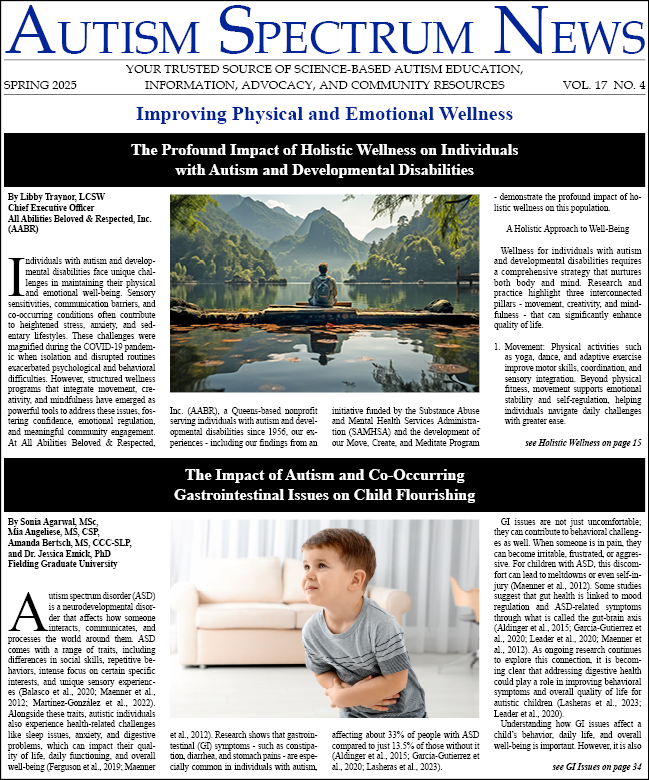-
“Behavior as a Voice”: Medical Comorbidities Expressed Through Challenging Behaviors in Children with Autism Spectrum Disorder
Autism Spectrum Disorder (ASD) is a heterogeneous neurodevelopmental condition defined by social-communication challenges and restricted/repetitive behaviors. However, these behaviors often serve as a form of communication, particularly in non-verbal or minimally verbal individuals. Medical...
-
Pulling It All Together: How to Create a Multidisciplinary Team for Your Child With Autism
When families receive an autism diagnosis for their child, they may not realize they are also likely receiving a diagnosis for other medical and behavioral health conditions that have not yet been identified. Autism is a chronic condition that requires ongoing treatment and support. Certain...
-
ECHO Autism for Mental Health Clinicians: Creating Access to Specialized Care in Local Communities
The growing population of individuals on the autism spectrum who have co-occurring mental health conditions necessitates a workforce of mental health professionals who are competent and confident in working with these individuals. Unfortunately, the current research depicts a large gap between that...
-
Understanding Insurance Coverage for Autism and Co-Occurring Visual Impairment
According to Petretto et al. (2023), “…autism could currently be considered one of the most commonly reported co-existing developmental disorders in children with blindness or other severe visual impairment.” The etiology, or the biological cause of the blindness, was directly correlated with...
-
The Silent Roadblock: Understanding the Ripple Effects of Feeding Difficulties on the Spectrum
While it’s widely documented that autism spectrum disorder (ASD) affects social interaction, communication, and behavior, there is a less spotlighted, yet pivotal, piece to these neurodivergent children: feeding difficulties. It’s estimated that up to 80% of autistic children have some form of...
-
Helping Youth with Autism and Co-Occurring Low Vision and Blindness
The prevalence of autism has been increasing over the years. The CDC estimates that 1 out of every 44 children has an autism spectrum condition (CDC, 2021). It has changed from a low-incidence disability (i.e., 1 in 10,000) to a more common one. Blindness, on the other hand, is currently considered...
-
Is It Genetic? My 40-Year Journey of Misdiagnoses for My Son
Forty years ago, my son Matthew was born. At the time of his birth, he had no apparent health issues. We began noticing that he wasn’t developing like a neuro-typical child when he wasn’t hitting milestones like rolling over. Since then, we have gone through countless tests and been given...
-
A World Without Emotions: Alexithymia and Autism
Before we delve into defining alexithymia and autism I’d like to paint a picture in your mind. Imagine living in a world where emotions do not appear to exist - no clear indications of anger, sadness, or happiness. So much so that even categorizing these emotions does not exist - a neutral...
-
Evaluating and Treating Restrictive Eating in Children with Autism
Picky eating is common for children with autism spectrum disorder (ASD). Autistic individuals often show atypical eating patterns and have more difficulty with mealtime behaviors in comparison to their non-autistic peers (Christensen et al., 2019; Mayes & Zickgraf, 2019; Sharp et al., 2013)....
-
Understanding, Diagnosing, and Treating Catatonia in Individuals with Autism Spectrum Disorders
Catatonia is a distinct cluster of mood, motor, vocal and affective disorders once thought to be solely a specifier for various psychotic and mood disorders. It is now recognized in the Diagnostic and Statistical Manual of Mental Disorders (5th edition; DSM-5; American Psychiatric Association,...




